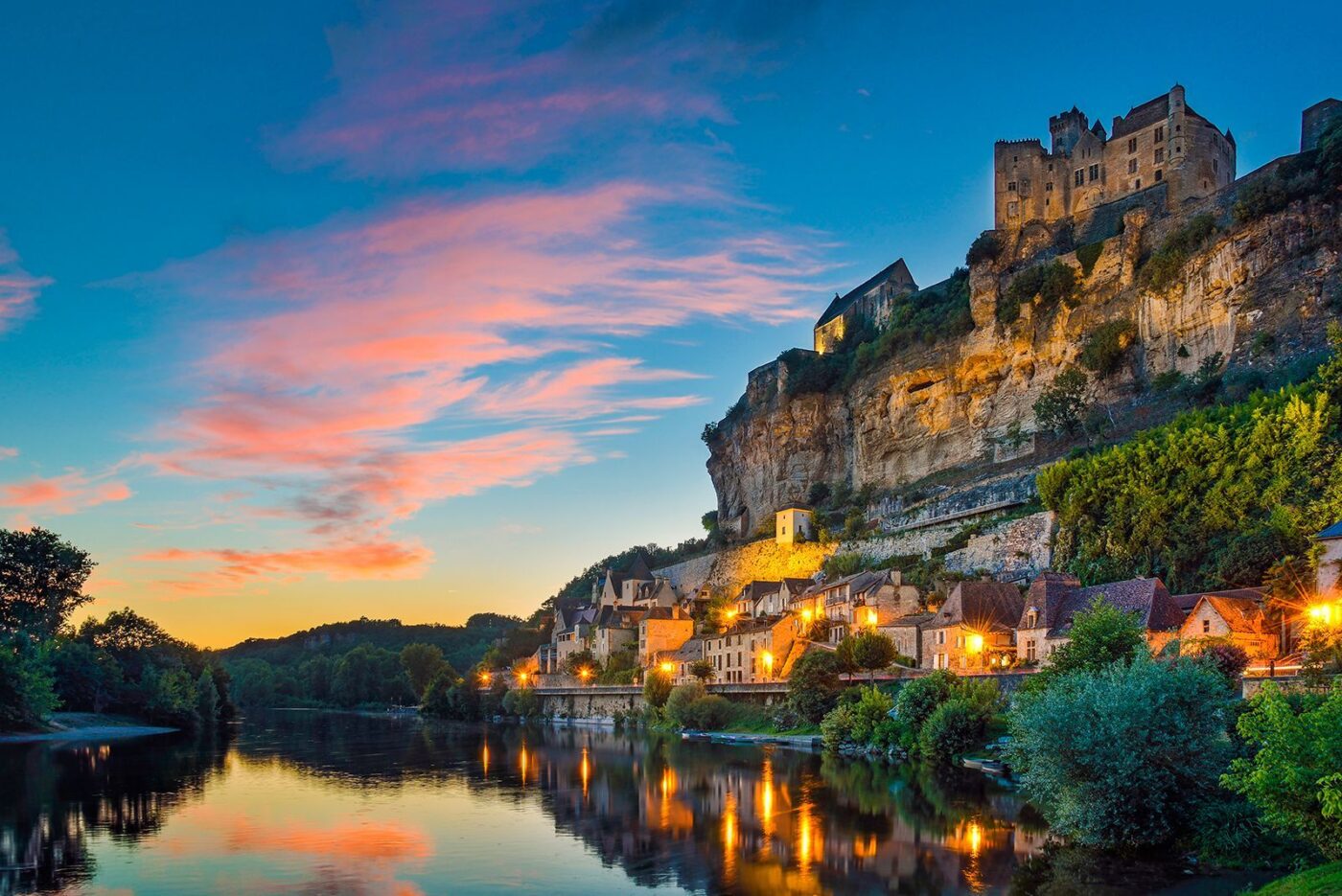LA UNKNOWN FRANCE
Why you should visit Dordogne
Colmar, Lyon, Burgundy and obviously Paris. Been there. Done that. Waited in the lines. Tasted all the wines. Seen the sites. For those in love with France and the general French vibe of timeless style, history, culture and food, there are areas of the country that remain unspoiled by mass tourism. Secret spots to explore that can open your eyes (and mouth) to the true beauty and mystique of France.
One of those areas is the Dordogne region. Located in the Nouvelle-Aquitaine region, roughly half-way between the Loire Valley and the Pyrenees, it’s not as known to the masses. As CEO and founder of Raison d’Etre Travel, I can tell you just about everything you need to know about this extraordinary, hidden-in-plain-sight gem of France…
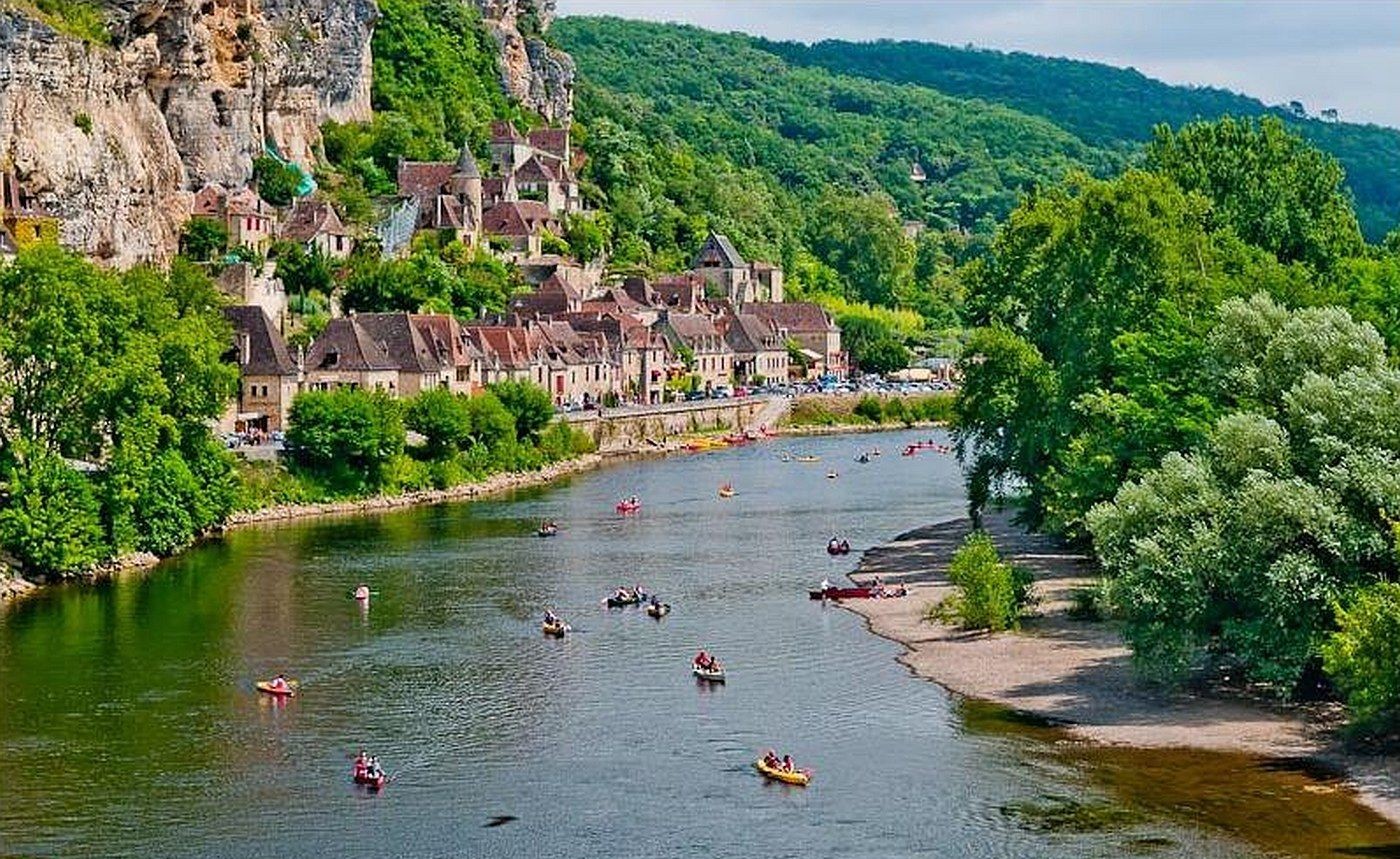
Let’s answer some questions!
Why is the region not as known as, say, the Loire Valley? How has it stayed off the radar?
The region isn’t exactly untouched, but as far as American tourists, it is certainly less populated. The region is more widely known among French and European visitors. The Loire Valley has the added charm of all the various chateaux, which I feel is a big draw. So, on top of incredible wine, scenery, and food, you have the added option of visiting or staying in these chateaux which is a big draw for visitors.
The reason it isn’t featured as predominantly on American tourists’ radar is twofold. Firstly, it’s a bit more of an effort to get to, and secondly France is chock full of highlights and “must see” regions. There’s no way to see and do it all in one 7-10 day trip, which is what most American tourists currently do. The closest international airport is Bordeaux, and of course, if you’re in Bordeaux, you have to stay and experience Bordeaux, and you obviously can’t skip the vineyard options in this region as there are plenty to choose from.

Visiting Dordogne has to be intentional. It’s not a region that you happily stumble upon, but one that you make a point of visiting.
What are the main towns of the region?
Bergerac
Perigueux
Saint-Jean-de-Cole
La Roque-Gageac
Rocamadour
Beynac-et-Cazenac
Sarlat-la-Canéda
The main thing to note and remember is that the region is divided into four colors and referred to as “Périgord Noir,Périgord Pourpre, Périgord Vert, and Périgord Blanc”. Some of the really cute villages, such as Brantome and Saint-Jean de Cole are in Périgord Vert, are at the north end of the department (as the four areas are known). It’s green because of the Natural Park located in the area, and an abundance of streams. This area is a nature lover’s dream.
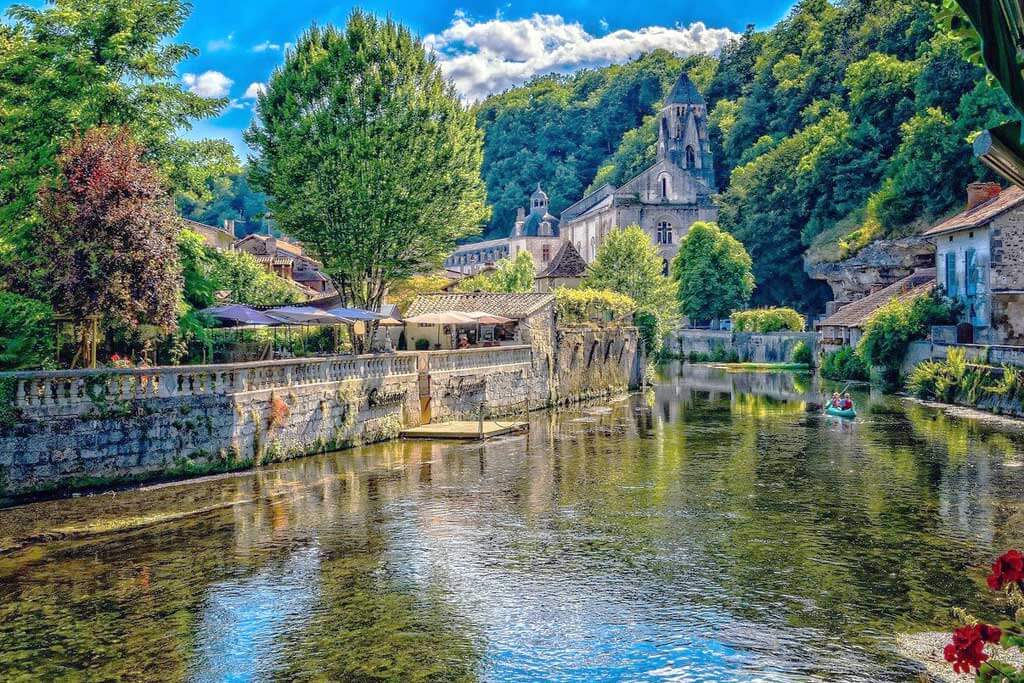
Périgord Blanc is named so because of all the limestone. You see it on a lot of the older constructions/ruins. The department’s capital, Périgueux, is located in this area, as well. Périgord Pourpre is where a lot of the vineyards are located and another one of the main towns, Bergerac. Fun fact: this is where Cyrano de Bergerac is from.
Périgord Noir is made up of valleys and is probably the oldest area of the department/region. It’s named so because of the oak trees, as well as the coal pits. The valleys here are historic. The famous Lascaux Cave is located in this area –- the “Sistine Chapel of prehistory” as it’s known, a site not to be missed.

Is wine produced there? Isn’t wine produced everywhere in France?
Yes, Dordogne does have wine, and some really great options at that. The wine is a bit more niche, with the major one being Monbazillac. It’s a sweet wine and not to everyone’s taste. However, there are some great Bergerac AOC wines that are a bit dryer as well and that come from a blend of grapes.
And yes, wine is produced in practically all of France, although the northern coast doesn’t produce much.

How is it such a gastronomic Heaven? What’s the local food, what are the specialties, and how is it different to other regions of the countryside? Where are the best places to eat?
Truffle hunting is a possibility here — not just in Italy! — and the region is celebrated for its black truffles. Duck and goose are also excellent in the region, including foie gras. You’ll see a lot of mushrooms and nuts make up a lot of the dishes as well. There are also excellent strawberries in the summer.
Le Vieux Logis is a top place to eat (especially if you’re staying there). To start, the property is a Relais & Chateaux, which guarantees a great meal. They don’t try to reinvent the wheel, but rather serve traditional dishes throughout the three dining options on the property.
The restaurant has 1 Michelin star and has the nicest, least pretentious (while still being quite upscale) setting. Eating on the terrace is certainly a treat.
Their more casual option, Le Bistrot, offers the same excellent quality in terms of dishes, just served a bit more simply and not fussy. One of my favorite spots though is their “fast food” idea – Les Tartines etc…You can order from a specific menu for aperitifs, snacks, light lunches, and it’s just the most casual, fun, homey feeling.
Le Saint Jacques in Bergerac: a medieval building with great local fare paired with local wines. When it comes to choosing what to eat, I recommend anything and everything. They do not have a large menu and it changes seasonally, so it’s hard to recommend any one dish. However, everything is made in-house and it’s all delicious. Seafood is always good and of course, you have to try whatever version of duck they’ve made!
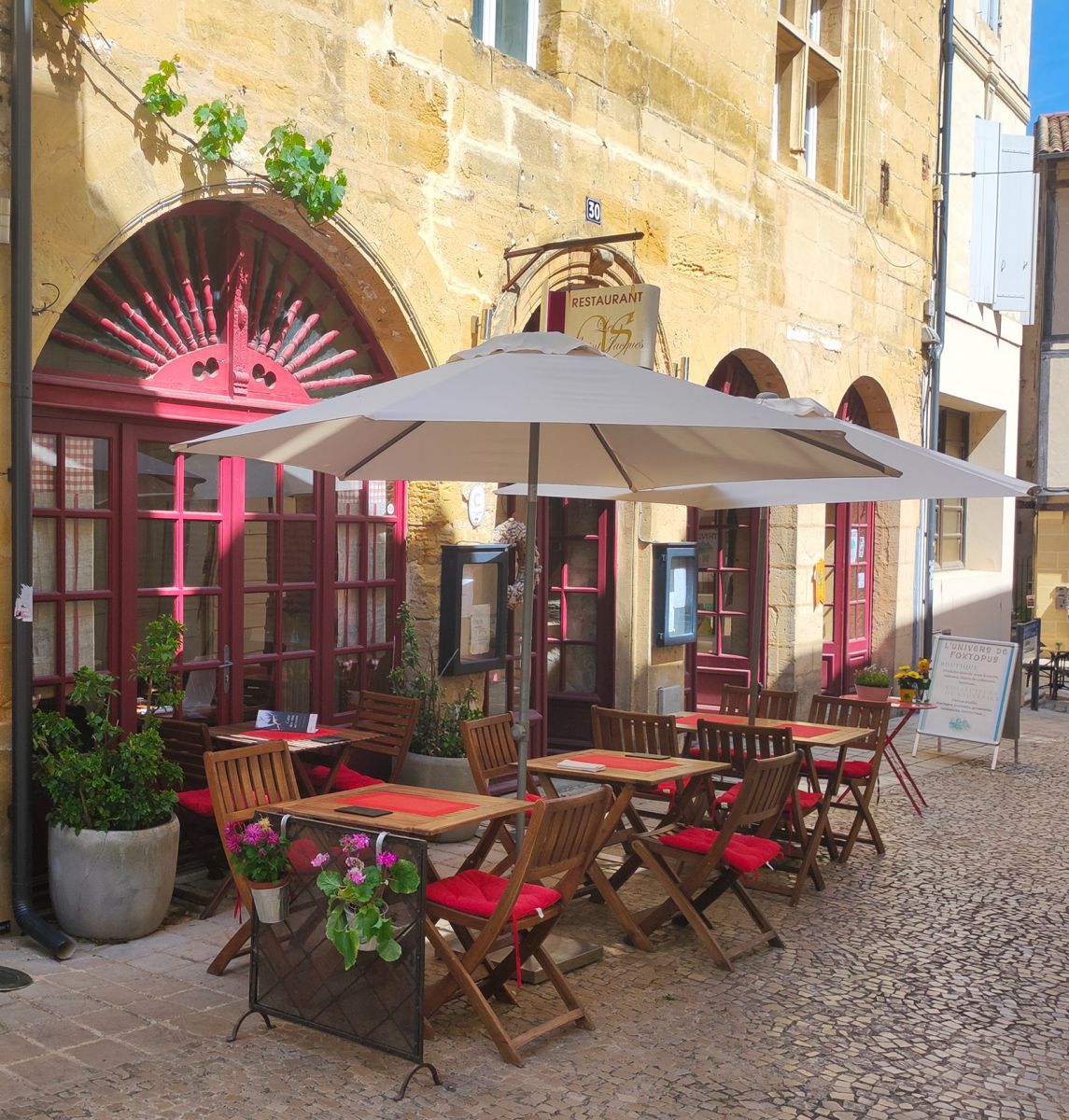
I almost don’t even want to divulge this one because it’s a bit of a hidden gem — but… Le Tuquet. It may not look like much, but it’s all heart, great food, great wine, at a ridiculously affordable price.
This is really more of a local spot, but it’s worth trying to get a table for lunch.
Another really great spot where reservations are essential is Famille Moutier. They do an excellent job with traditional duck dishes and their whole menu is very authentic to the region. This is local fare at its finest.
These restaurants highlight why dining in Dordogne is different from other spots. Everyone truly focuses on local options and crafts incredible dishes from simple ingredients. The flavors have a chance to shine through and you get to experience the region in an entirely different way.
Where are the best and most interesting places to stay — from luxury (or at least nice) hotels to the French equivalent of the Agriturisimo?
Le Vieux Logis, a spectacular hotel and restaurant (see above) The property is just authentic, classic, and genuinely comfortable.
Le Moulin du Roc. Located in a really cute village named Brantôme. This one is more of a “smart” luxury pick. It’s unassuming and on the smaller side. It’s well located and family-owned with a great restaurant on-site.
The rooms could perhaps use a little bit of a modern refresh, but that can add to the charm. Everything is nice and it’s a nice quiet spot to pause and collect your thoughts while exploring the area!

Chateau les Merles. 17th century chateau with a 9-hole golf course as well and some great views.
This one is more appreciated after you’ve learned a bit about the owners and its recent history. A couple from the Netherlands has taken 15+ years to renovate this chateau in order to transform it into what it is today — a true labor of love. The restaurant on-site is excellent and the location overall is perfect for exploring. There’s plenty to do on property or you can take bikes out to explore some of the local trails or ride to the town of Bergerac. It’s another small property, so you feel properly looked after during your stay.
La Chartreuse du Bignac. This is tucked away and feels like a family home. This one would be a lot of fun for a buyout. The aesthetic is slightly more reminiscent of a classic French farmhouse/home. There are exposed wood beams and stone walls, paired with beautiful wood floors. It’s very much my taste!
It’s a 17th century manor that once belonged to a Catholic order. Again, a labor of love has turned this into what it is now. You have the perfect combination of historical charm and modern comforts/touches of luxury. Another sure bet with a great dining option right on property.
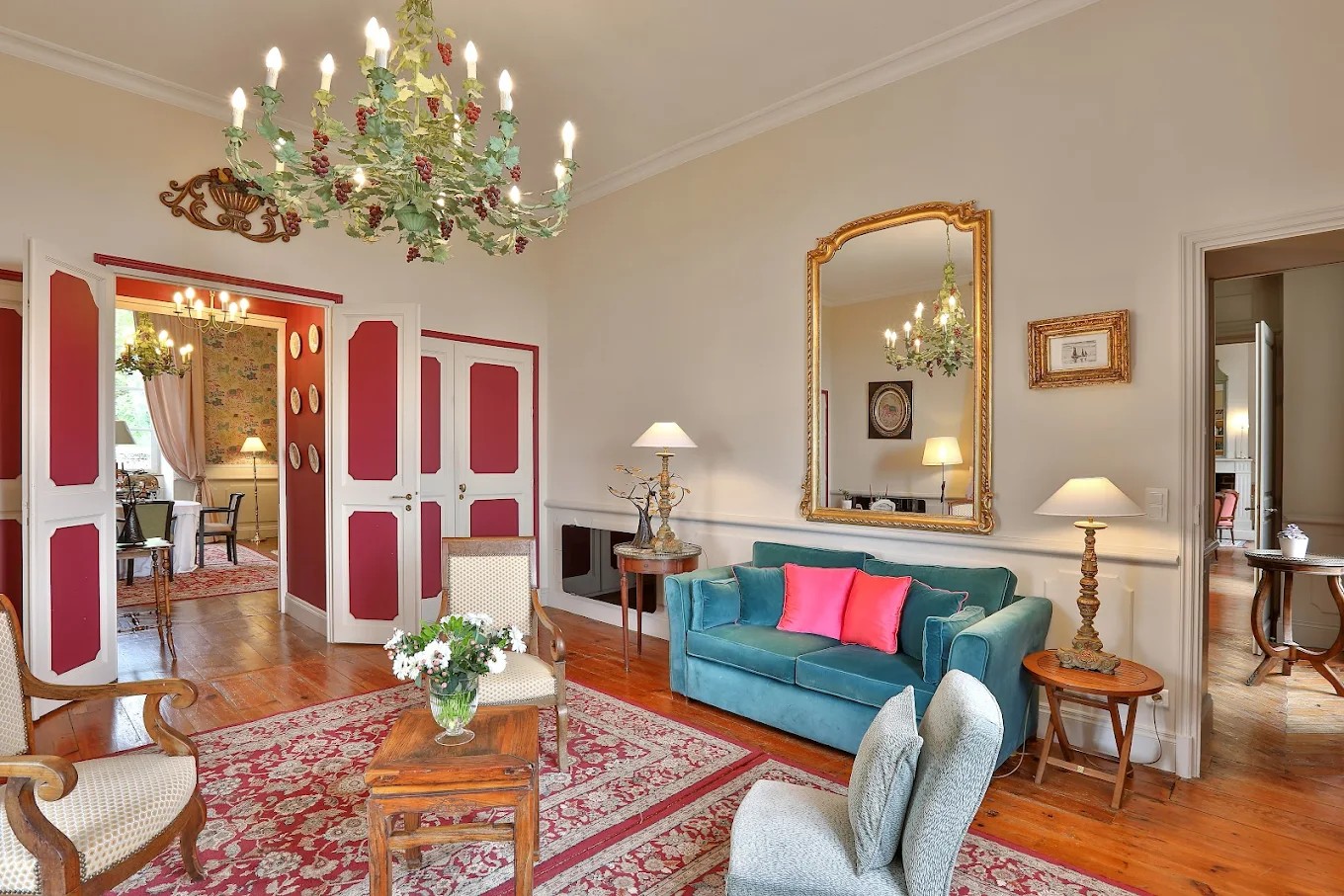
The above recommendations are 4 star and 5 star options (mainly 4*).
This one isn’t quite a farm-stay, but it remains within the spirit of Agriturismo: Chateau Feely in the town of Saussignac. It’s an accommodation on an organic vineyard, but it is self-catering.
They’re called gites in France. You’ll actually find a lot of really great gites to stay in, in this area. Most are renovated barns or chateaux and some are associated with a B&B as well (so you can stay at the B&B) OR stay in the self-catered accommodation). Another great example is La Ferme Buissoniere in Bardou. They have a gite, but they’re primarily a B&B. This one is special because it’s an 18th century farm and it’s truly in a great location for any hiking/biking trips/
How many days do you need to spend here, to see it leisurely, enjoy it at its own pace, not be barreling through a stuffed agenda?
I recommend dedicating at least one full week in order to see and experience a good portion of the region at a moderate pace. Even better, two weeks — if you want to truly take in the experience. Either way, a road trip really is the best way to explore the different parts of the region.

So the next time you’re craving a touch of France, skip the spots that everyone has seen and think outside the box. Travel is all about opening your eyes and experiencing new things. Let Dordogne be that new experience!






